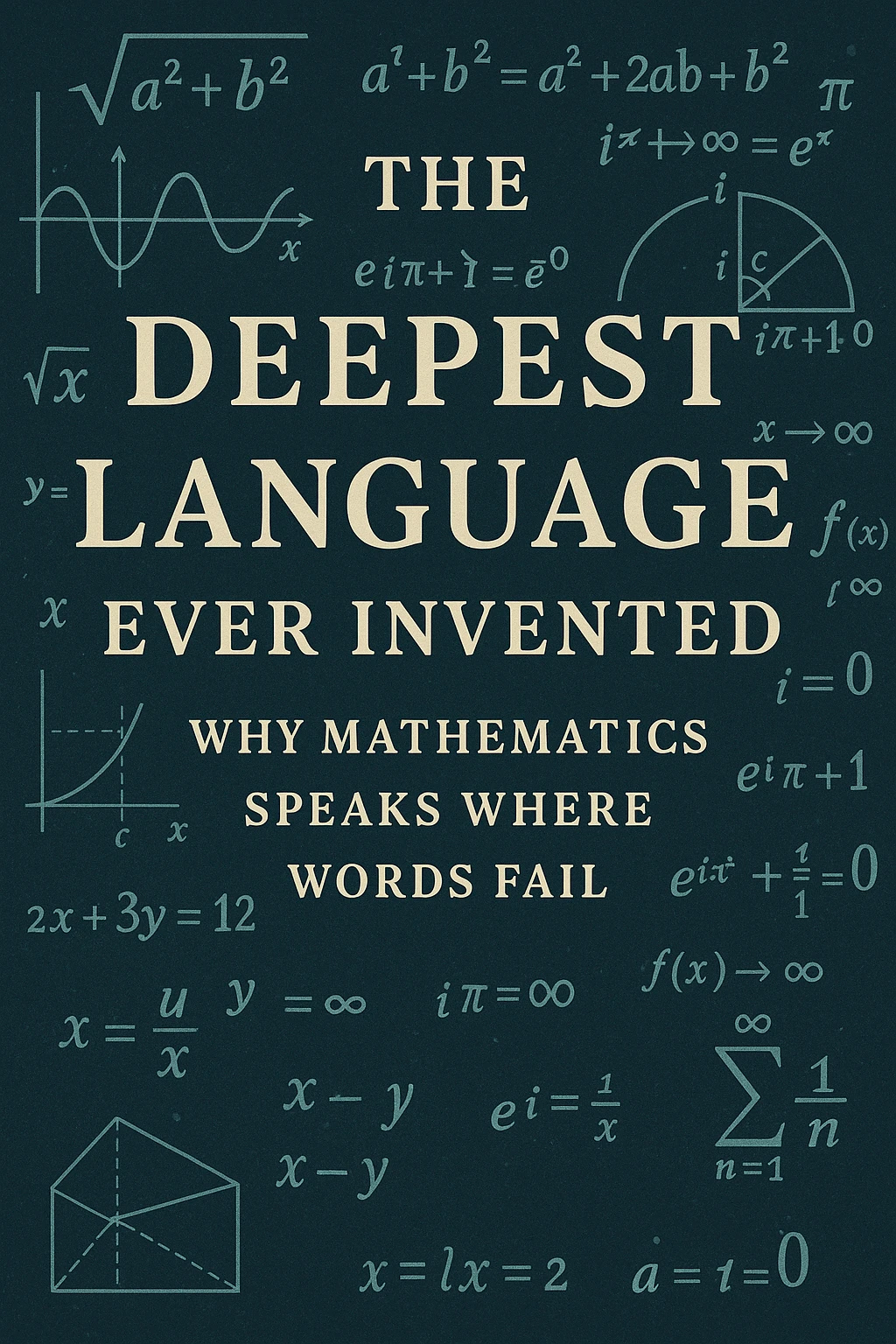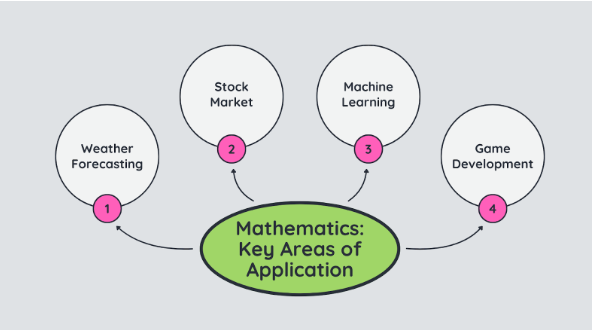What’s Behind Weather Forecasts, Stock Market, and Game Theory? Find Out with a B.Sc. (Research) in Mathematics

Blog / July 17, 2025
B.Sc. MathematicsB.Sc. (Research) in MathematicsThe whole universe exists in numbers. Galaxies do not just spin in any random way; they spin in the calm order of Fibonacci numbers. The same numeric structuring is evident in the formation of sunflower seeds, ocean currents, pine cones, plant leaves, flower petals, and even in the human body. Markets crash, migrate, or explode, all along curves, graphs, and equations. In short, the language in which the universe communicates is mathematics.
Every number tells a story and every formula hides a pattern. The one who learns to see these patterns learns to think ahead before the noise, before the crisis, and before the crowd catches on.
That is the sharpness mathematical thinking offers.
If this excites the mind and one feels drawn to explore how such patterns shape the world, a B.Sc. in Mathematics is a natural path to begin. It builds the mindset to decode complexity and the clarity to stay ahead of it.

The Deepest Language Ever Invented: Why Mathematics Speaks Where Words Fail
Mathematics is not just about numbers.
It is the only language known to stay the same across time, space, and culture. It works in Tokyo, Bengaluru, and Boston, exactly the same way. It speaks to machines, nature, space, and minds without bias or translation.
This makes it different from every spoken or written language.
When one sees the formula for gravity, the pattern of a wave, or the curve of a graph, one is seeing how the world explains itself. This is not philosophy. It is a structure.
Take the Golden Ratio. It shows up in sunflower seeds, Indian temple architecture, and even the human face. The Fibonacci sequence maps how trees branch and how galaxies swirl.
These are not metaphors. They are proof of the fact that mathematics is present every time, everywhere.
A B.Sc. in Mathematics helps students read this language fluently. The first year B.Sc. Mathematics course details often include calculus, algebra, and trigonometry, not because they are academic hurdles, but because they form the alphabet of this global, timeless language.
And this fluency is not just for exams. It’s for understanding systems that most people can’t even see.
From Abstraction to Anticipation: How Mathematical Thinking Discovers Structure in Chaos
Mathematics does not begin with numbers. It begins with abstraction, the ability to remove distractions and focus on what truly matters.
In an environment full of noise, irrelevant details, and shifting signals, abstraction is not only useful; it is essential. It allows one to identify patterns beneath the surface, to recognize the shape of a problem even before it becomes visible to others.
By abstracting a problem, one builds a simplified but accurate version of reality: a model. This model can then be tested, adjusted, and applied to anticipate outcomes. That shift from reacting to forecasting is where mathematical thinking proves invaluable.
Take public health. During disease outbreaks, mathematical models help predict how quickly a virus spreads and when interventions must occur. In logistics, algorithms route deliveries through real-time traffic data. In financial systems, risk models quantify uncertainty long before markets respond.
In finance, it powers risk engines that respond in real time. In AI, algorithms built on probability and linear algebra process data faster than thought.
Each of these systems is dynamic, unpredictable, and filled with noise. Yet, through mathematics, they become legible and manageable.
|
Domain |
How Mathematical Thinking Works There |
|
Weather Forecasting |
Uses mathematical models to simulate and predict atmospheric behavior |
|
Stock Market |
Applies probability theory and statistical models to analyze volatility |
|
Urban Planning |
Uses geometry and graph theory for road networks and infrastructure |
|
Machine Learning |
Depends on linear algebra, calculus, and optimization |
|
Game Development |
Uses vectors, matrices, and logic functions to build simulations |
This mindset does not develop by chance. It is built through deliberate training.
A B.Sc. in Mathematics sets the foundation for it. From the first year, core subjects teach students how to define variables, strip away noise, and form structured representations of complex problems. Over time, this discipline rewires how one approaches uncertainty. Instead of guessing or reacting, one begins to assess, model, and anticipate.
From Nature to Networks: Mathematics as the Hidden Order Behind the Visible World
The world looks complex. Cities sprawl, signals crisscross, data floods in, and nature keeps moving without pause.
But underneath this constant motion, there’s structure. Mathematics reveals it. It shows the hidden patterns shaping everything, from natural formations to digital systems.
This is not a theory. It’s observable, measurable, and teachable. In nature, one sees:
- Fractals in coastlines, snowflakes, and river systems
- The Fibonacci sequence in sunflower spirals, pinecones, and branching trees
- Symmetry and tessellations in insects, crystals, and coral reefs
These aren’t artistic choices. They’re consequences of growth rules governed by mathematics.
A well-structured B.Sc. in Mathematics introduces these patterns through subjects like geometry, calculus, and linear algebra, all of which are often covered in the 1st year B.Sc. Mathematics subjects.
In networks, mathematics is no less essential.
- Graph theory explains how roads connect, how social networks spread, and how deliveries are routed.
- Probability models how messages flow through systems or how diseases spread.
- Game theory shapes strategies in economics and decision-making.
All these concepts run behind mobile phones, internet infrastructure, rail systems, and logistics hubs.
Even one of India’s largest railway route optimization systems runs on mathematical models, reducing delays and energy waste. In global finance, algorithms work on real-time decision models, built using matrices and calculus. In weather forecasting, mathematical simulations draw from fluid dynamics, which is part of every solid mathematics curriculum.
A student with a B.Sc. in Mathematics doesn't just study these systems. One learns how to think like the systems do.
Master the Language of the Universe: Apply Now to the B.Sc. (Research) in Mathematics at Shiv Nadar University (Institution of Eminence)
Choosing to pursue a B.Sc. in Mathematics is about selecting a way of thinking, a lens through which one will approach the world. At Shiv Nadar University, mathematics is not treated as a static subject but as a dynamic discipline that shapes thinkers, innovators, and problem-solvers.
The B.Sc. (Research) in Mathematics program offered by the School of Natural Sciences at Shiv Nadar University offers a rigorous foundation for a mathematical journey shaped by research, flexibility, and future relevance. It is designed to cultivate mathematical thinkers who thrive across disciplines. The program prepares students not only to solve problems, but to anticipate, model, and lead with clarity.
Start your journey at an institution that values depth over shortcuts, thought over noise, and potential over predictability. Apply now to the B.Sc. (Research) in Mathematics at Shiv Nadar University and be prepared to see the pattern before the problem.
Conclusion
When the world talks about skills, it focuses on speed, data, and outcomes.
But mathematics builds something else; it’s about clarity, getting proof, and removing the cloud of uncertainties. It teaches one to identify a repetition, a pattern, even in a system of highest entropy.
Mathematics never fails to amaze us with its secrets. And if a student, after passing the 12th class, is excited to play with equations & numbers, and willing to build the expertise to seek structure in chaos, B.Sc. in Mathematics is the course where it all starts.
This program teaches students to build models before problems break out and to rethink assumptions when things go wrong. In a world full of uncertainty, this mindset gives an unmatched edge. From day one, the course develops the skills to navigate complexity with confidence.
Explore the B.Sc. (Research) in Mathematics at Shiv Nadar University and step into a future where you don’t just solve problems, you see them before they arise.
FAQ
Is a B.Sc. in Mathematics only useful for research or teaching?
No. This degree builds skills for logic-driven roles in data analysis, technology, economics, and risk strategy.
What do students learn in the first year of a B.Sc. in Mathematics?
Key concepts include Calculus, Algebra, Probability, Trigonometry, Geometry, etc.
Is a B.Sc. in Mathematics relevant for the future?
The world is now becoming data-oriented. Analysis of raw data, making decisions based on patterns, etc, are now becoming the general practice. All these factors make a B.Sc. in Mathematics a great option for the future.